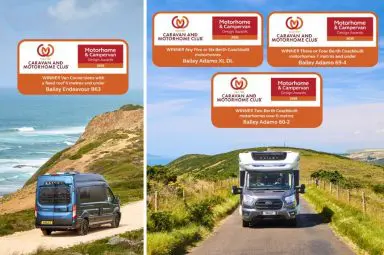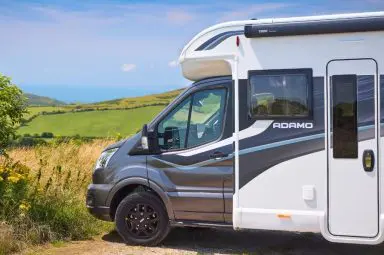Off-Season Adventure in the Alps
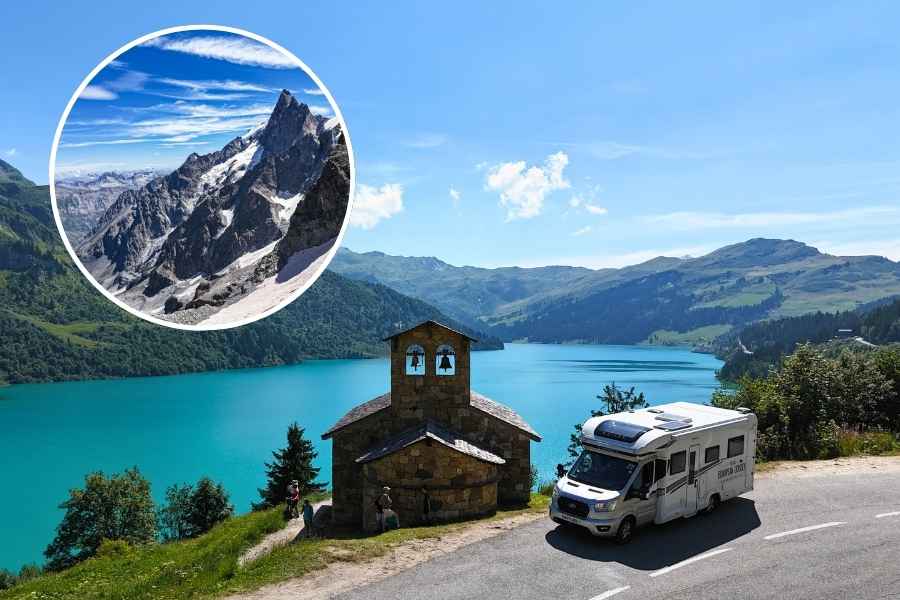
Only this time, we would, for the first time, be following a specific route from north to south, having previously only ever meandered where our fancy took us on any given day. The route in question is one of Europe’s most iconic driving routes, the Route des Grandes Alpes. Starting in Thonon-les-Bains and finishing in Menton, the route is around seven hundred kilometres long and crosses no fewer than seventeen mountain passes.
Despite the multitude of winding roads, it is, without doubt, one of the most awe-inspiring motorhome adventures to be found on the continent, as well as an epic cycling adventure for those who prefer two wheels to four. Originally built to showcase the mountains’ scenery and encourage tourism among cyclists and other road users, the route was completed in 1937 and continues to hold major appeal today.
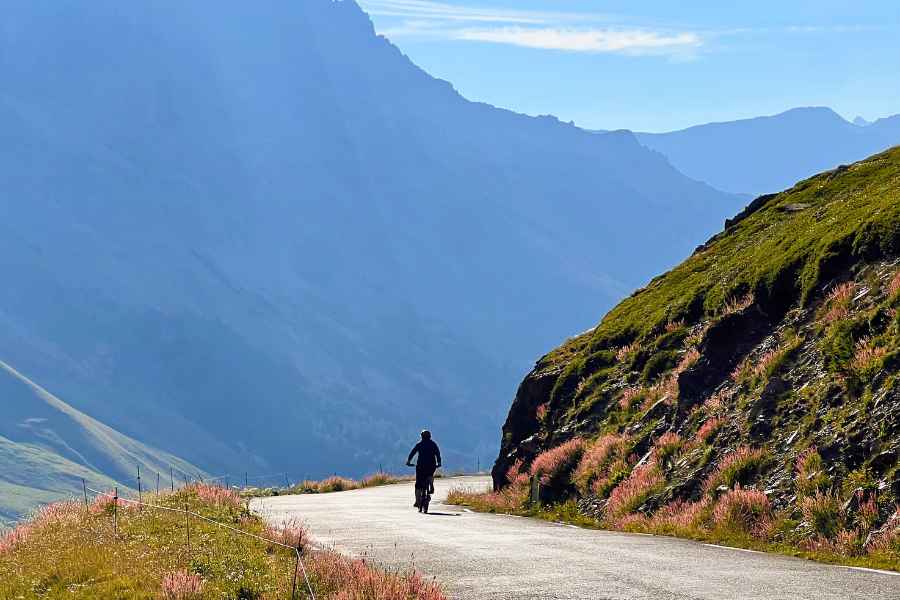
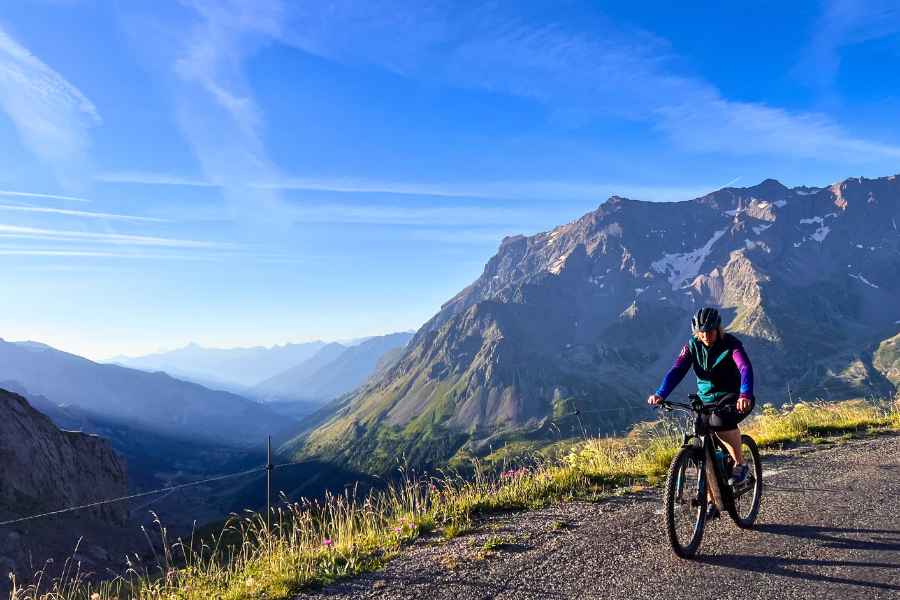
Having left Lake Geneva behind, our journey began with the relatively small Col des Gets, which provided a gradual introduction before the bigger passes that lay ahead in the coming days. Next up was the Col de Colombière, an altogether more demanding route that becomes steeper as you approach the summit. It’s from the top that we pause to look back at the stunning panorama of various mountains folding in on each other, reaching back as far as the horizon.
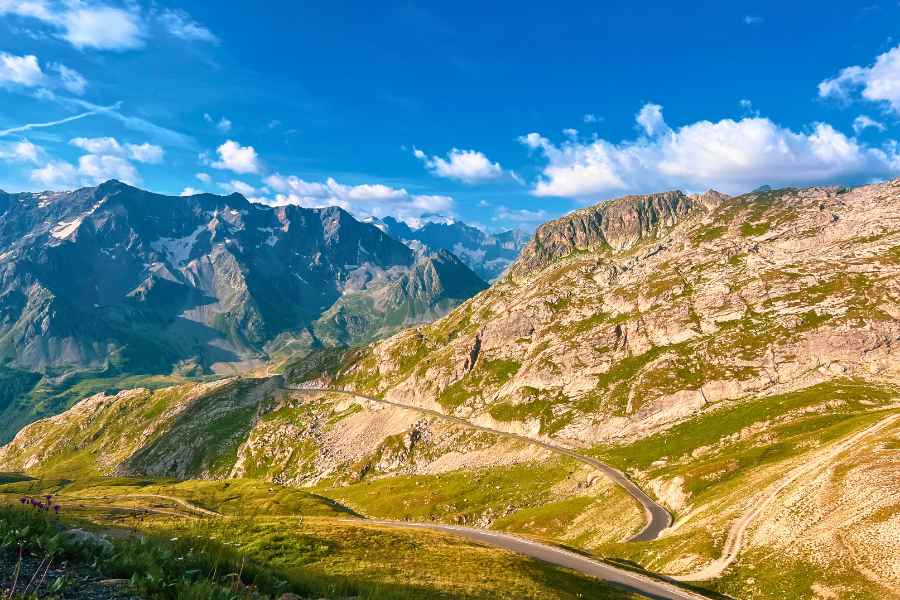
Our first stop along the way was at Caravan and Motorhome Club site, Camping l’Escale in the picturesque village of Le Grand-Bornand. As luck would have it, our arrival happened to coincide with the annual Fête de l’Alpage, a traditional festival celebrating the Alpine way of life on the mountain pastures. Throughout the day, we tried our hands at various techniques used for preparing wood to build the omnipresent wooden chalets found in the Alps, as well as helping to make wild fruit conserves, meeting an array of wonderful cows—much to our daughter Dorothy’s delight—and sharing in a communal banquet.
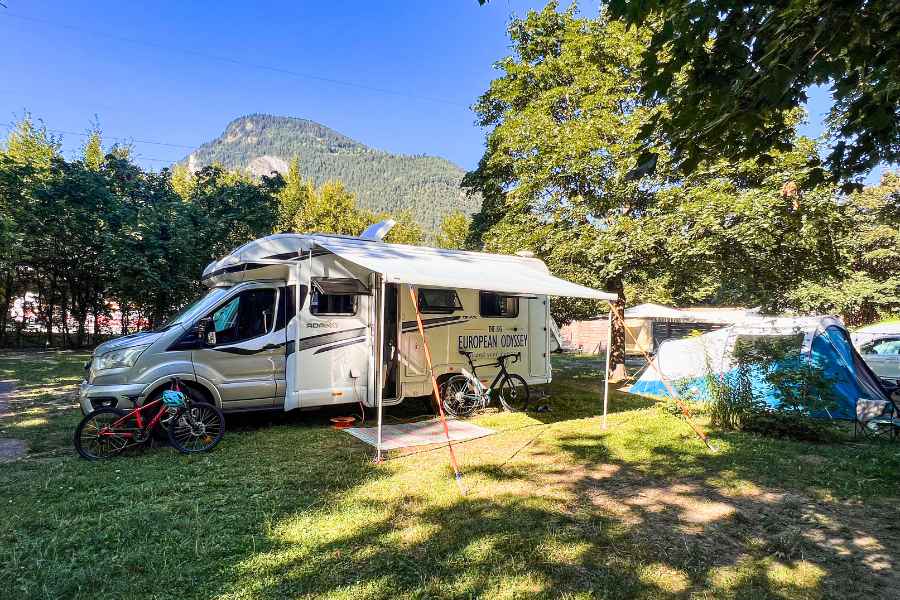
The centrepiece of the next leg of our journey was the Cormet de Roseland, a climb I know well, having cycled over it on several occasions. Despite knowing what was to come near the summit—the stunningly beautiful Lac de Roseland—I was no less impressed when the azure-blue waters began to appear as we rounded one final corner, arriving on the edge of the lake that sits some two hundred metres below the summit of the mountain. It’s a fitting place to sit and enjoy a picnic.
Perhaps the most iconic pass of the entire route is the mythical Col du Galibier, famed for its regular use in the Tour de France. The pass tops out at 2,645 metres, and while there is a tunnel a little way below the true summit, we couldn’t resist the temptation to take the motorhome over the very top. It would also prove to be the site of one of the most memorable bike rides of the trip, venturing back up the following morning with my mum for company on her e-bike, watching the sunrise over the mountains as we pedalled up.
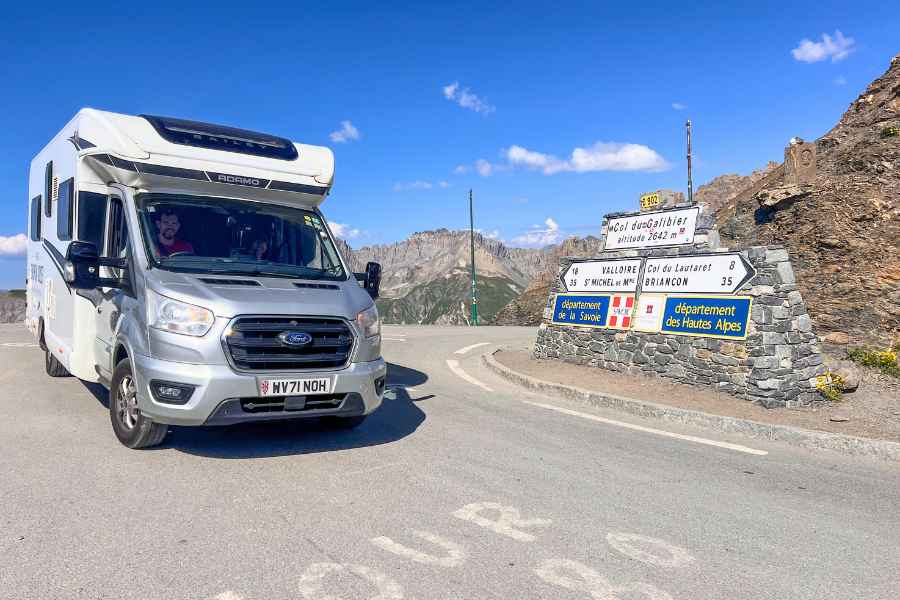
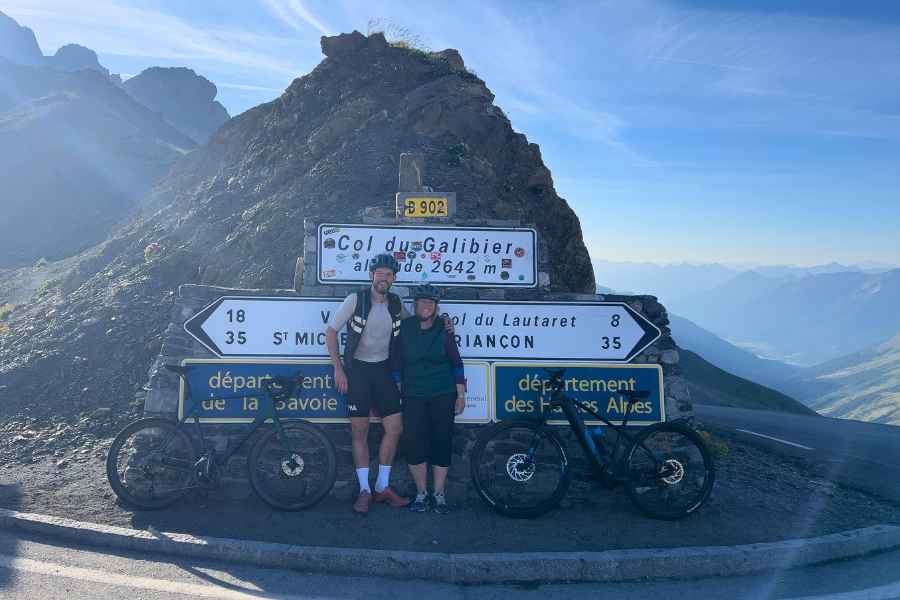
It wouldn’t be the highest point of our journey; that would come further south, courtesy of the Cime de la Bonette, the highest paved road in the French Alps, topping out at over 2,800 metres. Assuming, like us, you drive the summit loop rather than simply heading over the col, which is at a height of 2,715 metres. But what’s a few metres here and there when you have already crossed most of the Alps and rounded countless switchbacks?
Eventually arriving in Menton came as a shock. To go from the remoteness of the mountains to suddenly being surrounded by the hustle and bustle of one of the Riviera’s most popular towns took some adjustment. While all journeys need an endpoint, we knew that we would have rather stayed in the mountains, surrounded by the grandeur of such majestic landscapes.
Not that we necessarily needed one, but our time driving through the Alps reminded us of the staggering beauty of these mountains, as dramatic as they are beguiling. It’s amongst these precipitous peaks that you are reminded of just how small we are in this world. More than that, it’s here that we can escape a world of constant demands, disengage, and reconnect not just with nature, but with ourselves.
Latest news & events
See all news & eventsWinchester Caravans & Motorhomes Caravan, Motorhome and Awning Spring Spectacular
COLDEN COMMON, MAIN ROAD, WINCHESTER
Stowford Leisure (Devon) Spring Open Weekend & Awning Show
STOWFORD LEISURE (DEVON), A361 WEST DOWN, ILFRACOMBE, DEVON
